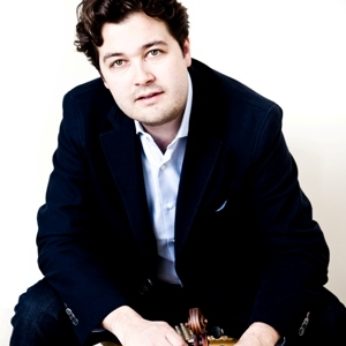Composer: Johannes Brahms (b. 1833 - d. 1897)
Performance date: 03/07/2014
Venue: Bantry Library
Composition Year: 1886-8
Duration: 00:20:29
Recording Engineer: Richard McCullough, RTE
Instrumentation: va, pf
Instrumentation Category:Duo
Artists:
Lawrence Power -
[viola]
Simon Crawford-Phillips -
[piano]

Every summer Brahms left
and went on vacation in the mountains of
or
for a mixture of composing, mountain walks, beer-gardens and long musical
evenings with friends. In the summer of 1886 he was in
survived the long and difficult birth of his final symphony and the congenial
company and magnificent scenery at the Swiss resort released a flood of chamber
works – the Second Cello Sonata, the Second Violin Sonata, the Third Piano
Trio, a group of songs for a young singer who had turned his head and the not
quite finished Third Violin Sonata. He finished it two summers later and sent
it to Clara Schumann, who responded with youthful warmth: I marvelled at the way everything is interwoven, like fragrant tendrils
of the vine.
The opening Allegro starts sotto voce, the violin’s high singing
line unfolding above an uneasy, syncopated piano part – full of suppressed
passion and anxiety that soon breaks out into eloquent rhetoric. The swiftly
flowing exposition makes do with two themes linked by the piano’s short
transition motif leading to an all-too-brief ecstatic second theme. The
development follows almost as if it were an extended cadence and is wholly
concerned with elaborating the first subject tune. This takes place over the
piano’s insistent tolling in the bass imitated by the violin’s plangent,
repeated quavers across two strings, which eventually reveals itself as a
highly decorated form of the first subject. With such a limited development,
Brahms allows the recapitulation the luxury of expanding into new areas, while
the development’s rocking violin figure is recalled in the coda.
The magical Adagio is formally extremely
simple, not even a ternary design but a long accompanied melody followed by its
decorated and tonally adjusted restatement. The violin’s sighing thirds towards
the end of the first statement recur with a wild gypsy intensity during the
second, but it is the restrained nobility of the theme that takes our breath
away and makes us long for more. It fades and dies too soon, though its passing
glows nostalgically. To follow this Brahms creates a skittish, tongue-in-cheek
intermezzo, a typical Brahmsian change of mood that suddenly evaporates in a
tiny coda like a spiral of smoke.
The Presto
agitato finale is almost brutally extroverted, featuring heavy chordal
piano writing and a broad chorale-like second theme that recalls another famous
Brahms finale, that of the early F minor Piano Sonata. It is a dark movement
full of unrequited passion with unexplained and sudden hesitations and even
moments of lyricism that balance the wilder outbreaks. But with Brahms in this
mood there are no easy solutions and the movement ends with a grim,
full-blooded coda.
Copyright © 2025 West Cork Music. All rights reserved.
Designed and developed by Matrix Internet